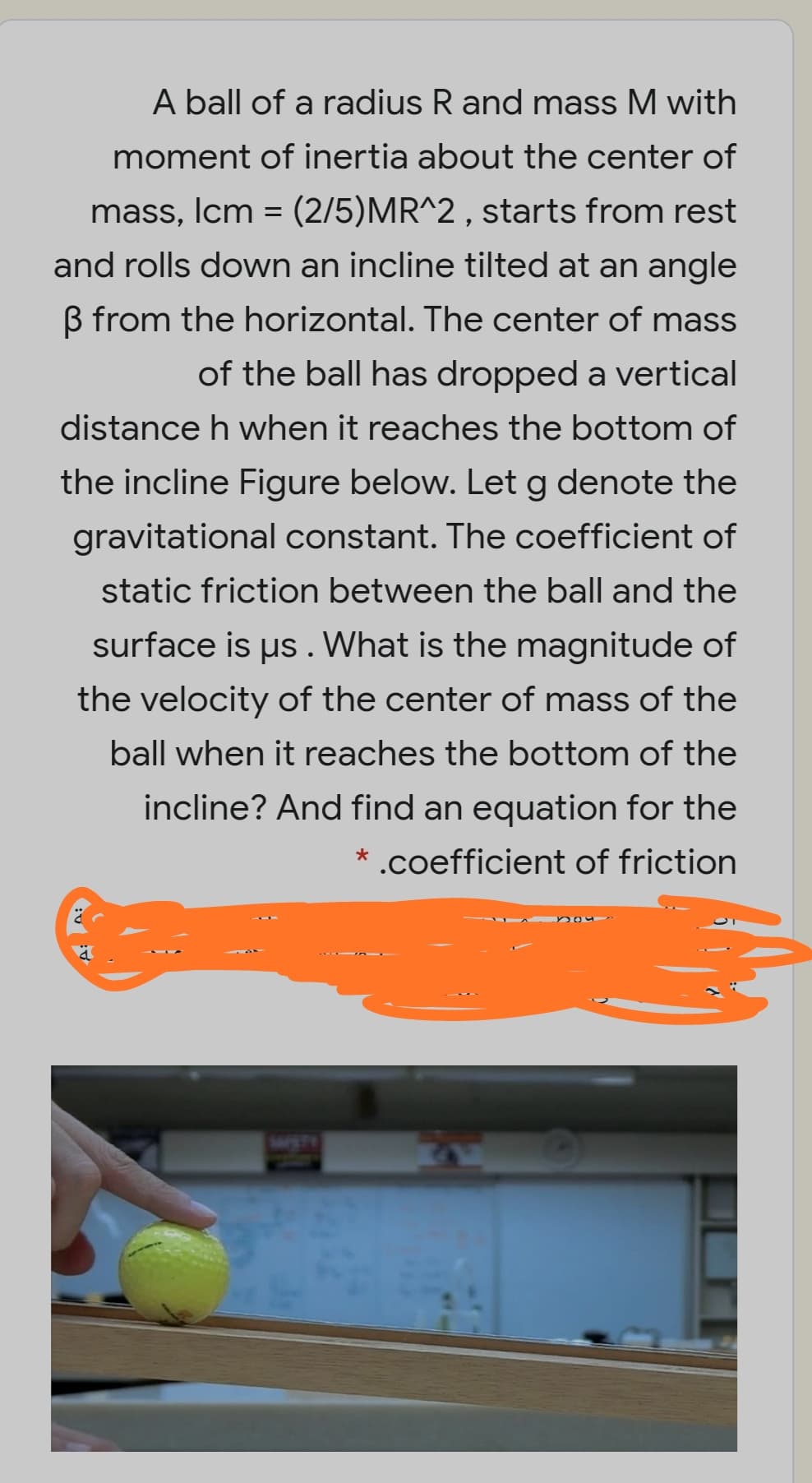A ball of a radius R and mass M with moment of inertia about the center of mass, Icm = (2/5)MR^2 , starts from rest and rolls down an incline tilted at an angle B from the horizontal. The center of mass of the ball has dropped a vertical distance h when it reaches the bottom of the incline Figure below. Let g denote the gravitational constant. The coefficient of static friction between the ball and the surface is us . What is the magnitude of the velocity of the center of mass of the ball when it reaches the bottom of the incline? And find an equation for the * .coefficient of friction WETN
A ball of a radius R and mass M with moment of inertia about the center of mass, Icm = (2/5)MR^2 , starts from rest and rolls down an incline tilted at an angle B from the horizontal. The center of mass of the ball has dropped a vertical distance h when it reaches the bottom of the incline Figure below. Let g denote the gravitational constant. The coefficient of static friction between the ball and the surface is us . What is the magnitude of the velocity of the center of mass of the ball when it reaches the bottom of the incline? And find an equation for the * .coefficient of friction WETN
Related questions
Question

Transcribed Image Text:A ball of a radius R and mass M with
moment of inertia about the center of
mass, Icm = (2/5)MR^2 , starts from rest
and rolls down an incline tilted at an angle
B from the horizontal. The center of mass
of the ball has dropped a vertical
distance h when it reaches the bottom of
the incline Figure below. Let g denote the
gravitational constant. The coefficient of
static friction between the ball and the
surface is us . What is the magnitude of
the velocity of the center of mass of the
ball when it reaches the bottom of the
incline? And find an equation for the
* .coefficient of friction
WETE
Expert Solution
This question has been solved!
Explore an expertly crafted, step-by-step solution for a thorough understanding of key concepts.
This is a popular solution!
Trending now
This is a popular solution!
Step by step
Solved in 2 steps
